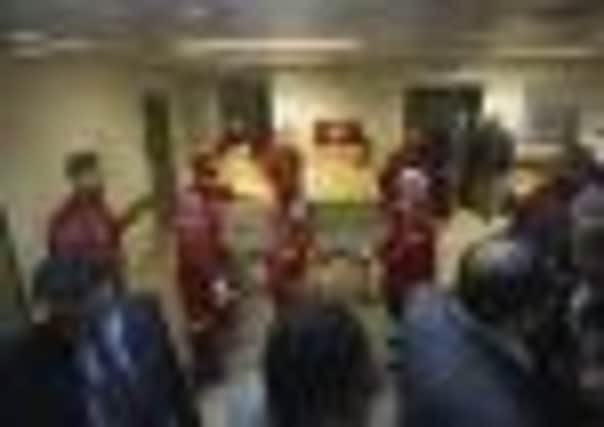Syria: ‘I saw rockets destroy houses with families’


Omar al-Homsi, a defector and lieutenant in the Free Syrian army, who commanded a unit of the Farouq Brigade which fought in Baba Amro, spoke to The Scotsman yesterday in Lebanon.
“We received information that the regime was going to attempt a full-scale ground assault three days before it happened,” he said. “We have sympathisers inside the Syrian army who leak intelligence through classified channels.
Advertisement
Hide AdAdvertisement
Hide Ad“[One] said the government was moving units of the elite 4th division (commanded by Bashar al-Assad’s brother, Maher) to block the entrance to Baba Amro from the district of Inshaat. They were positioning snipers on the tall buildings and bringing in reinforcements.”
Collecting whatever weapons they had stored, Lt Homsi and his men dug in around their positions.
They laid homemade roadside bombs on the routes that the Syrian army would use. However, these hasty, desperate last attempts at reinforcements were no match for a well-equipped government force.
“They used more firepower in the last five days than they did in the first three weeks of besieging the city. They were using tanks equipped with rockets with a 3km range and, in the final days, they hit with multiple rocket launchers. We had rocket propelled grenades with a range of 300 metres,” Lt Homsi said.
There were moments of hope, he said. Three days before they were forced to leave, he witnessed a unit of government troops turn against their division. The group defected on the outskirts of Homs and attacked a nearby unit.
“We found two tanks smouldering, bodies scattered on the ground,” he said. “Intercepting the army’s military frequencies, we heard officers complaining to their superiors in Damascus that their men would not follow orders.
“They complained that men who were under orders to deploy rockets on a particular area had refused.”
But the government had accounted for the risk of defections, he said. “They rotated the units four times in a five-day attack. We had not imagined that they would swap their troops like this. We were not able to withstand these forces. If they had not done this, maybe we would still be there,” he said.
Advertisement
Hide AdAdvertisement
Hide AdIt was his unit’s job to provide a diversion with street fighting, in order to give as many civilians as possible the chance to escape before the Free Syrian Army left.
“We hit a convoy using AK-47s and 63mm mortar rounds. They replied with anti-aircraft guns. Two of my men died in the attack,” said Lt Homsi.
“I watched the rockets bringing down entire houses with families trapped inside. It was in that moment I knew we had to pull out.”
Yesterday, the bodies of Sunday Times veteran war correspondent Marie Colvin and French photographer Remi Ochlik, killed late last month in the shelling of Homs, arrived in France, France Info radio reported. Ms Colvin’s body is to be returned to her family in the United States.